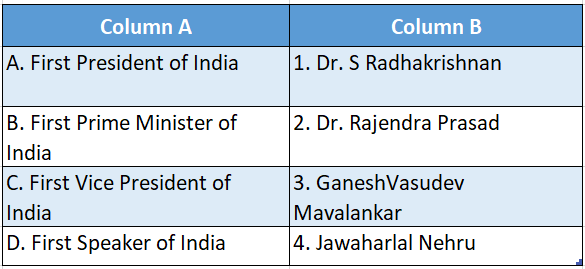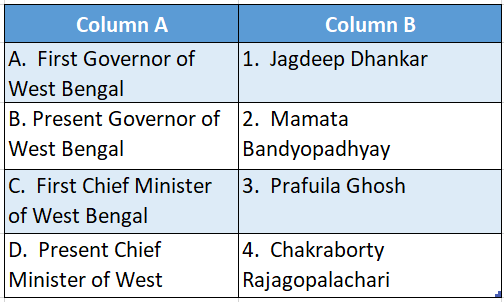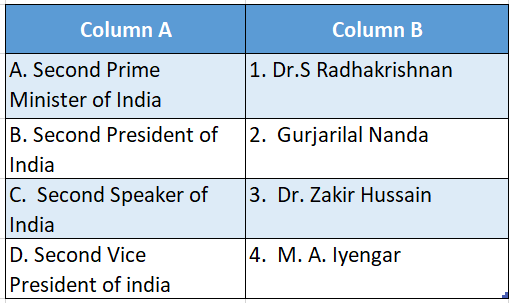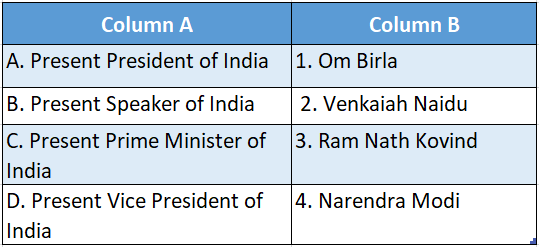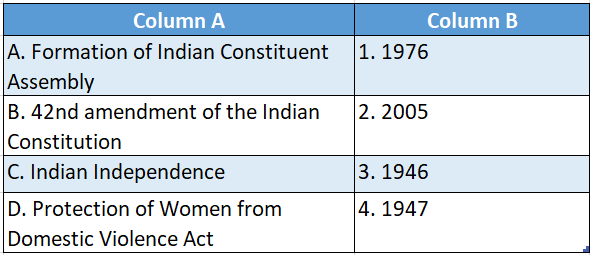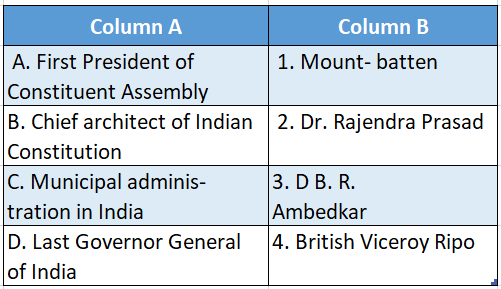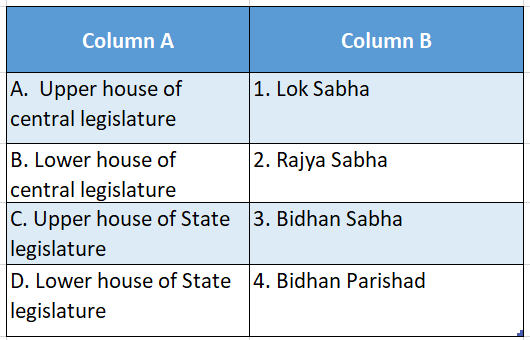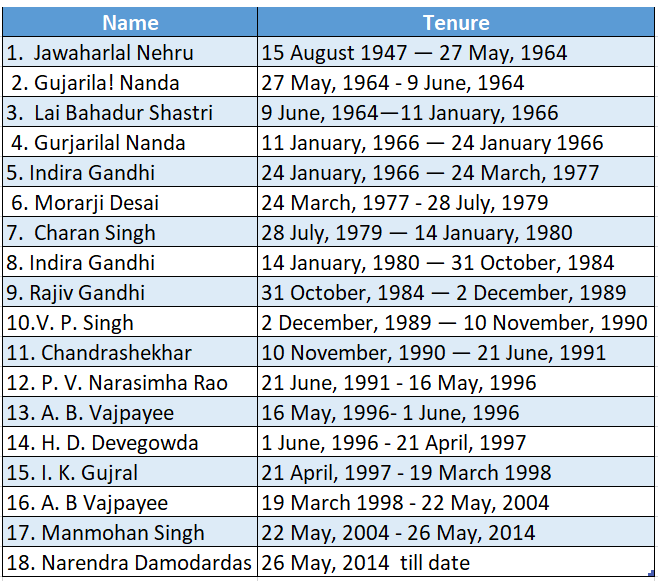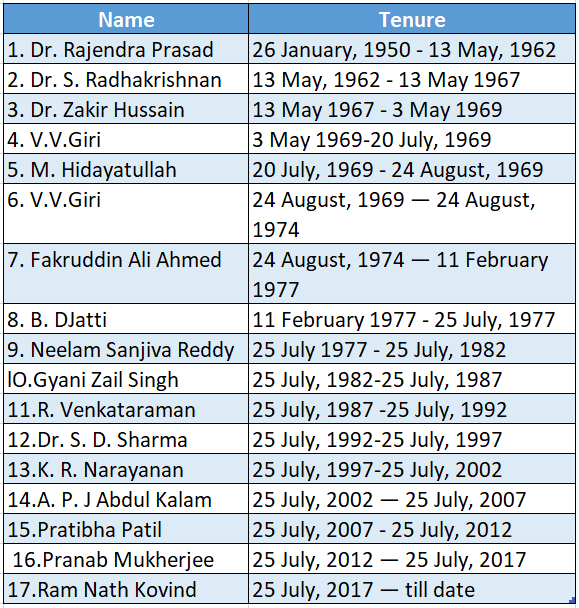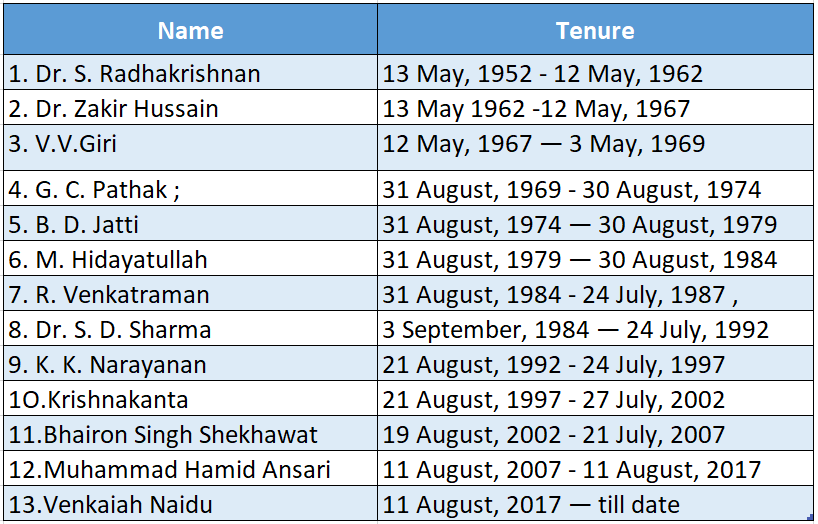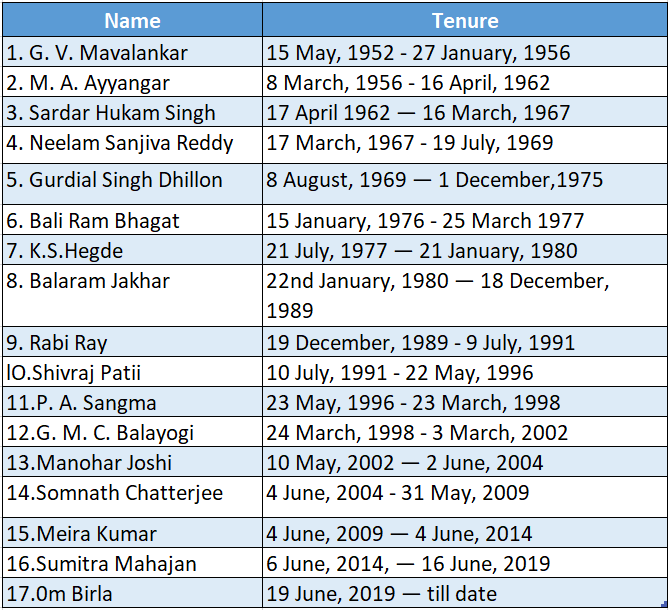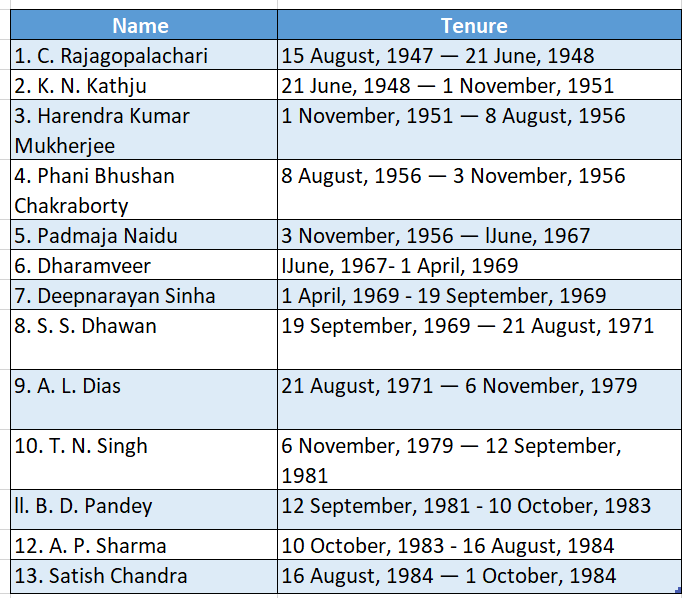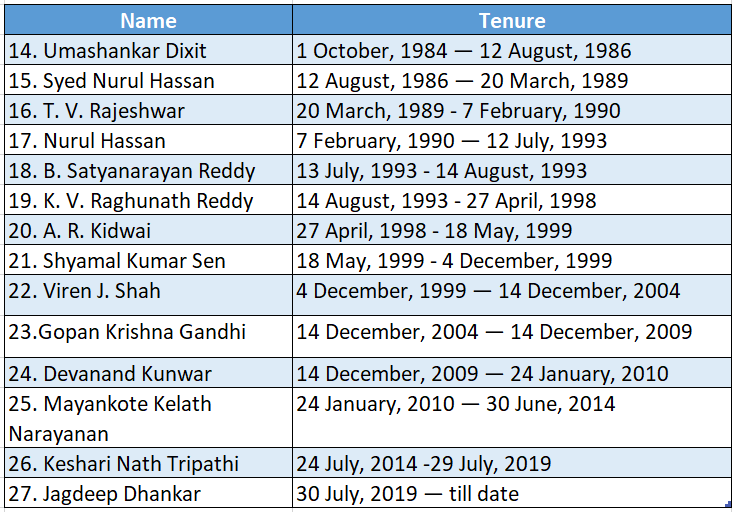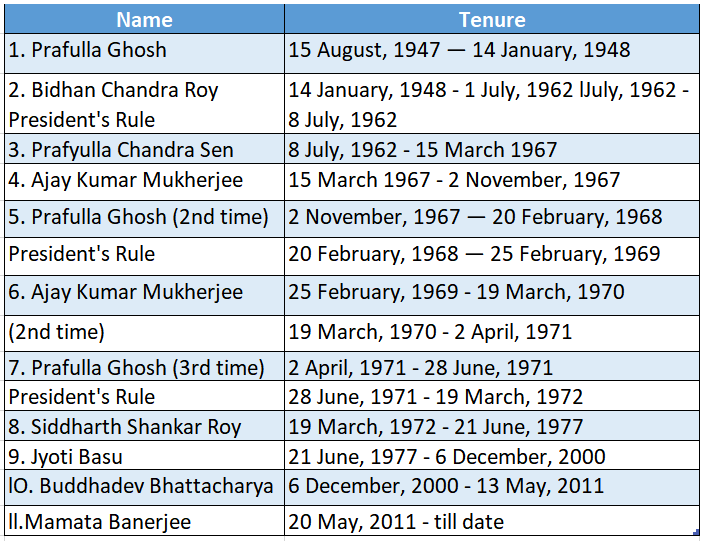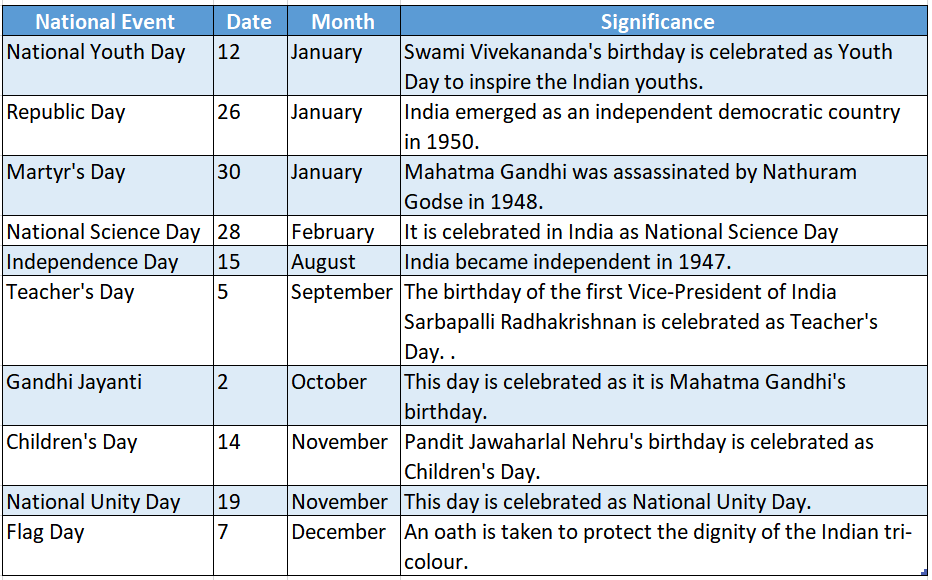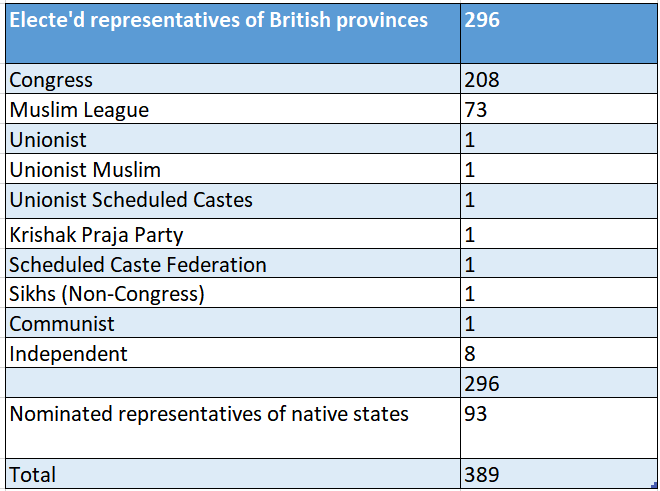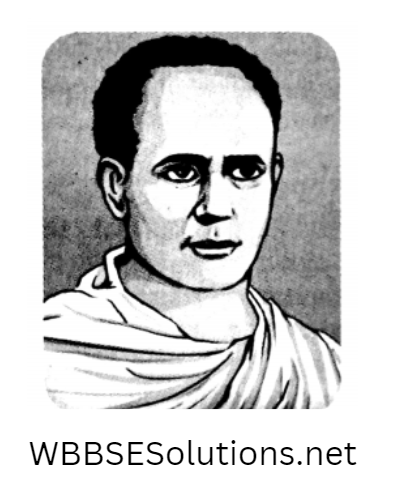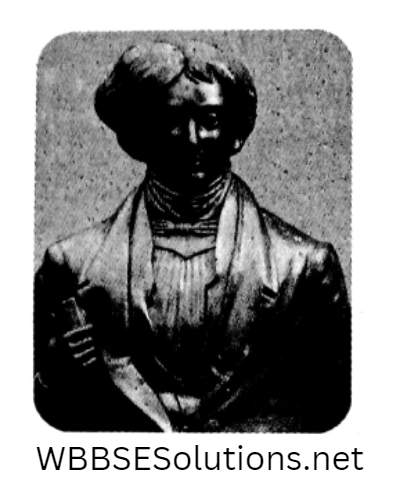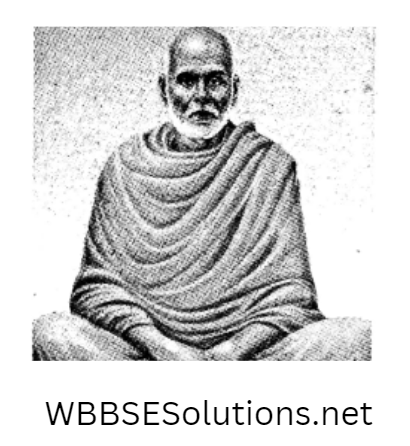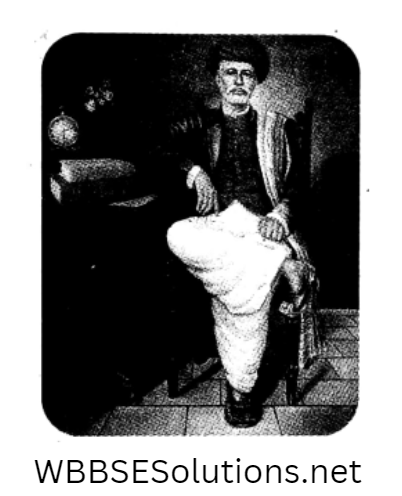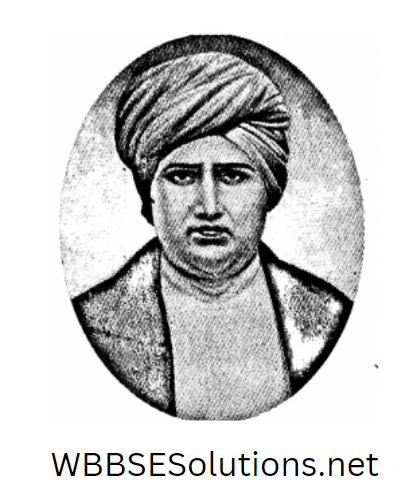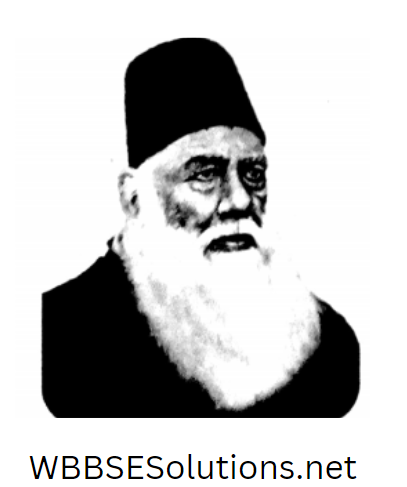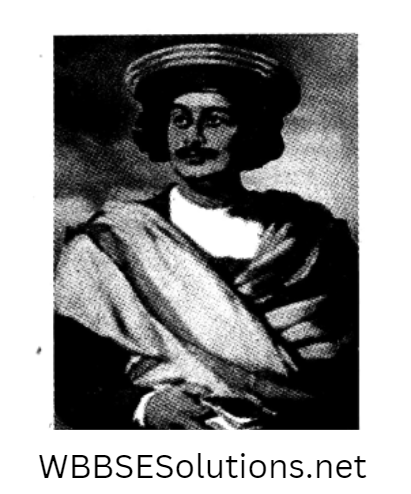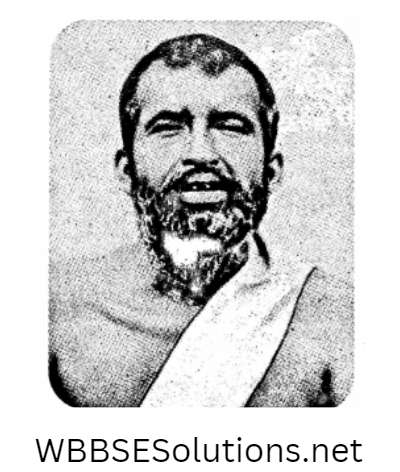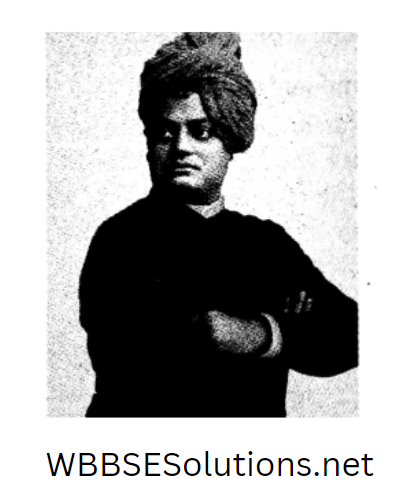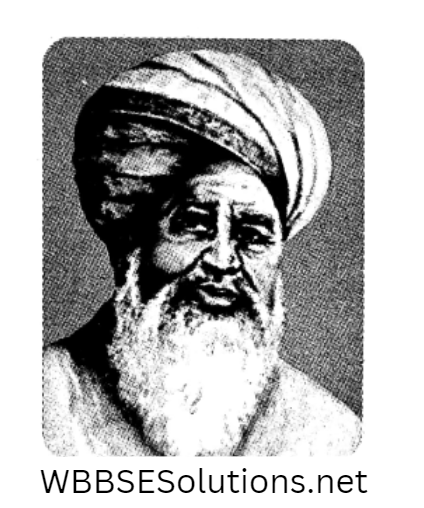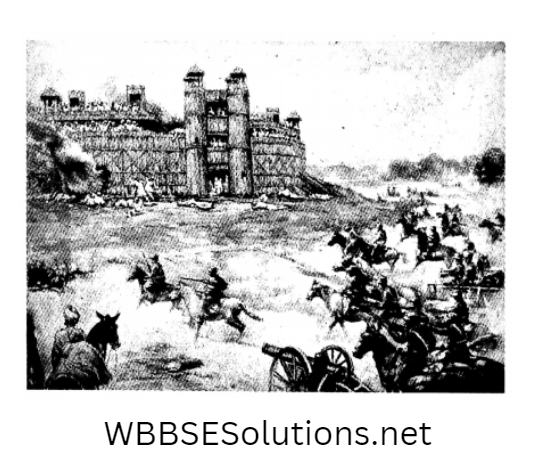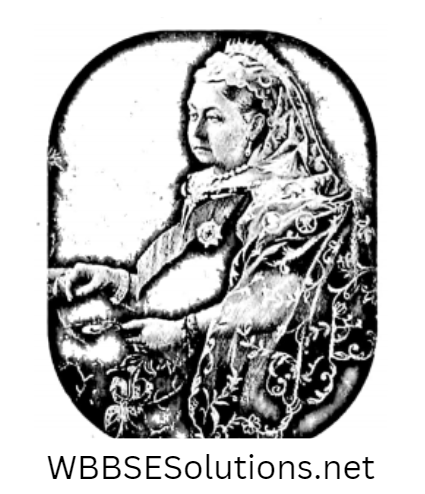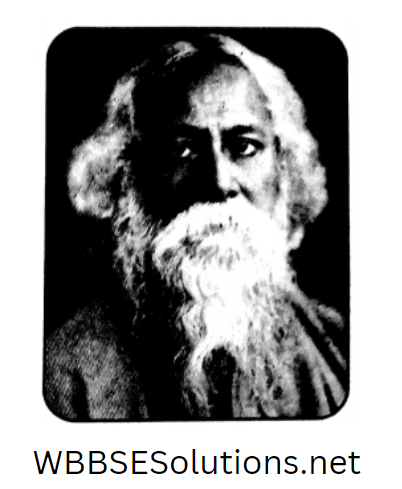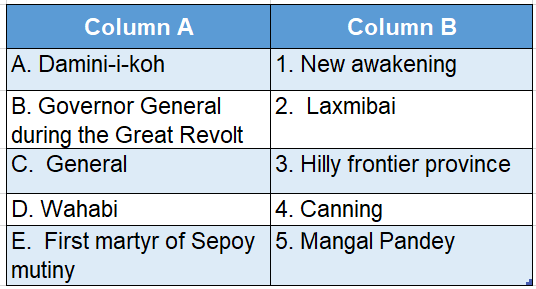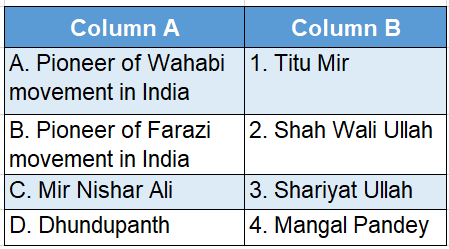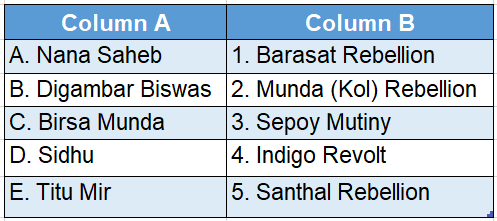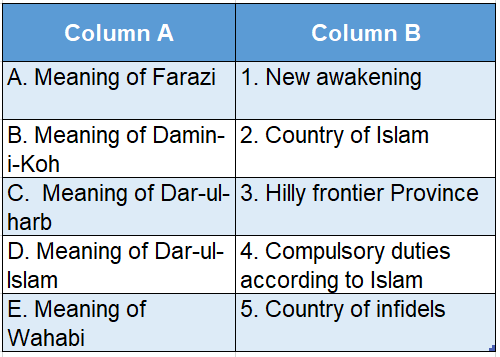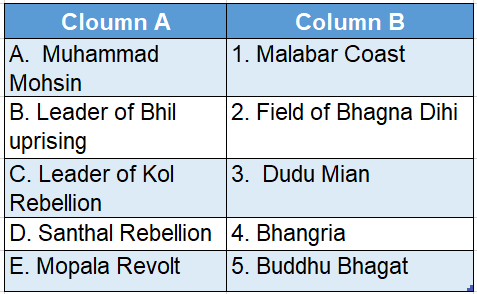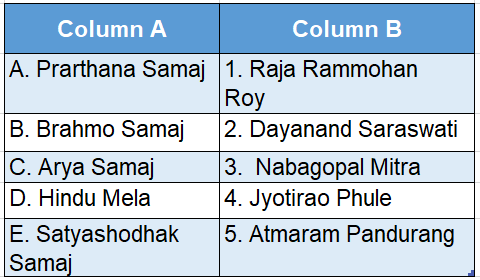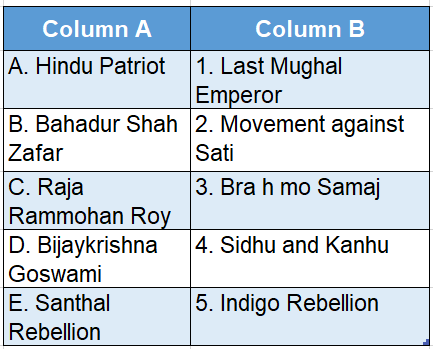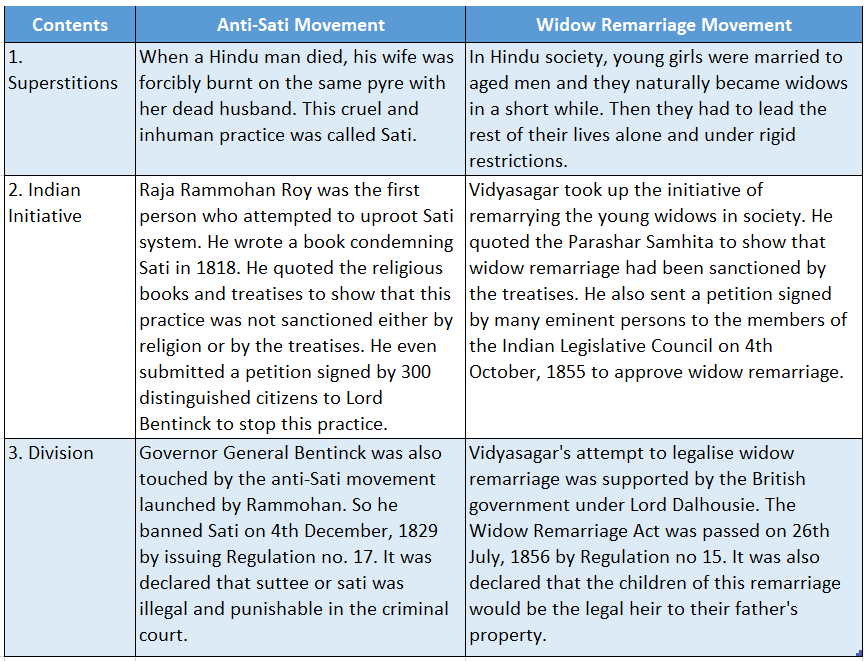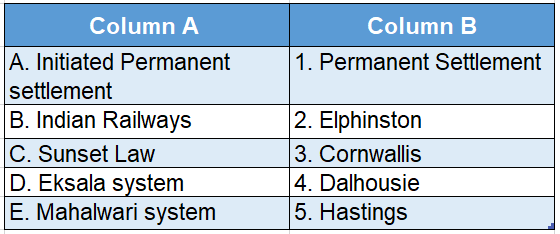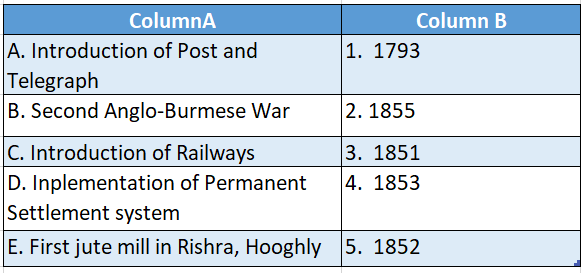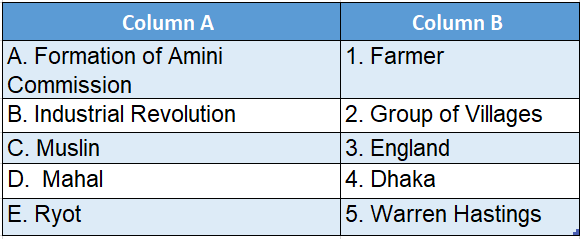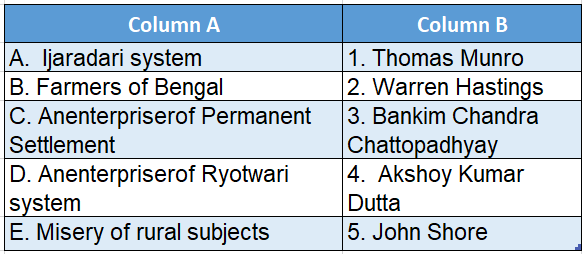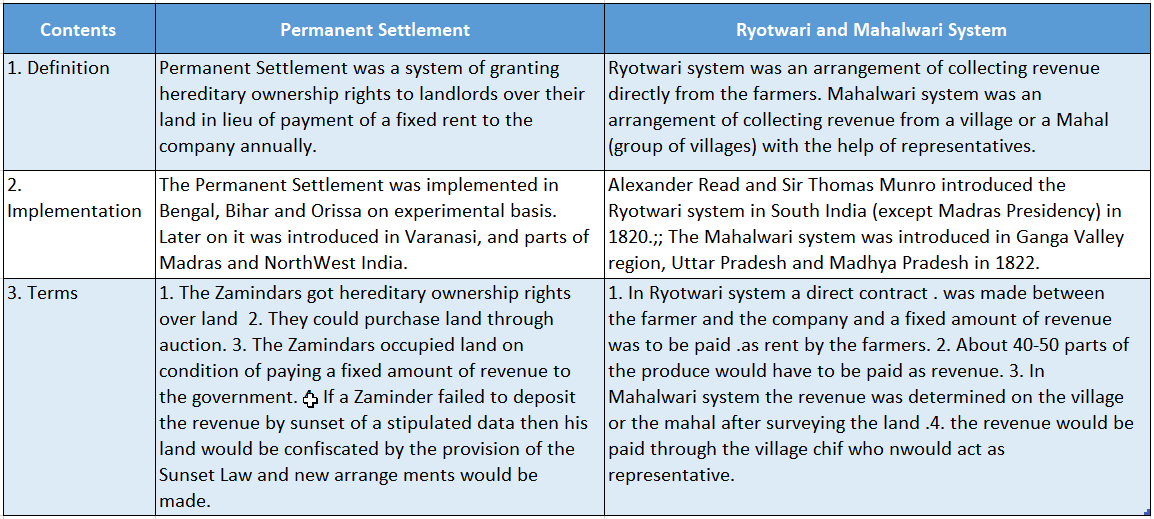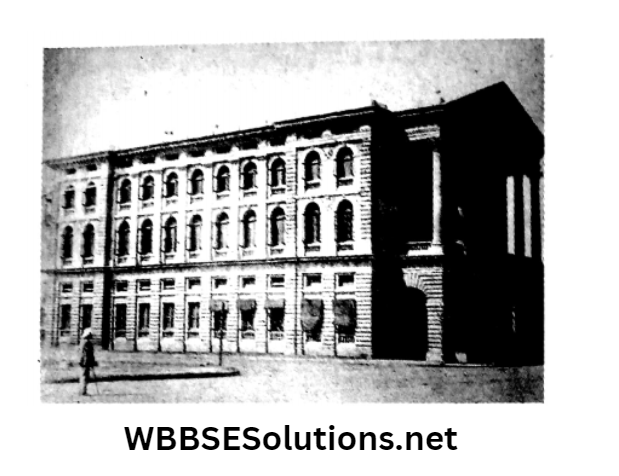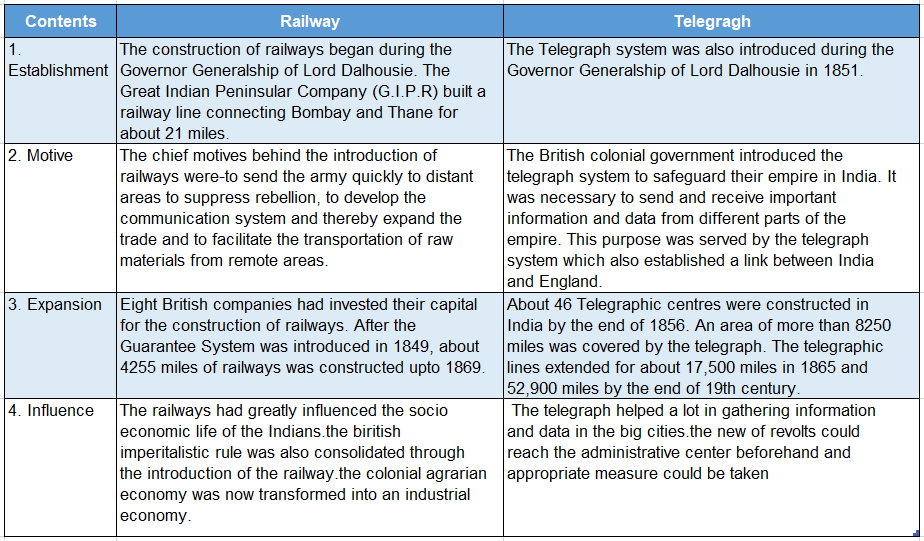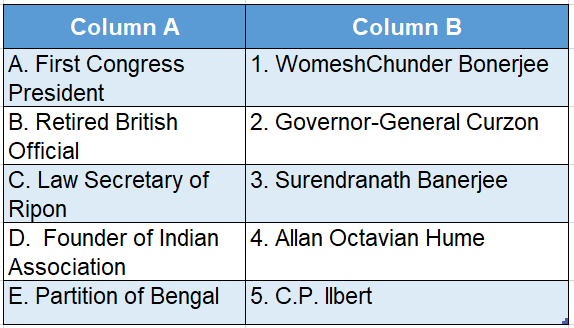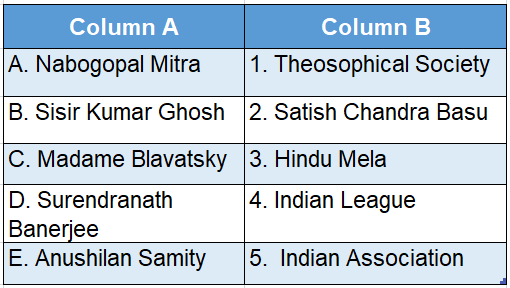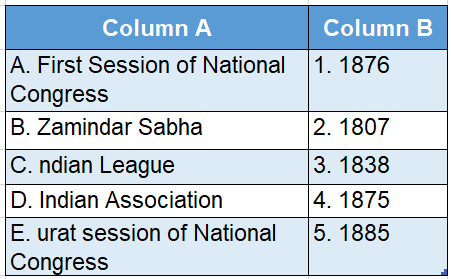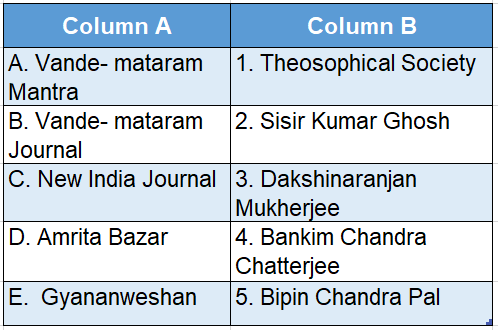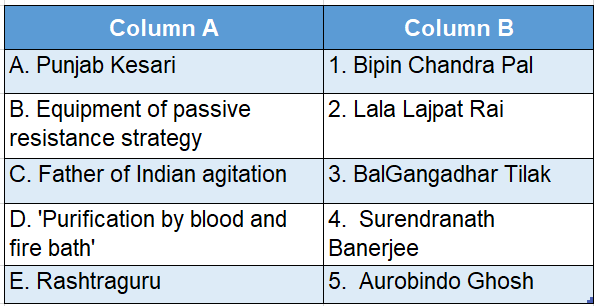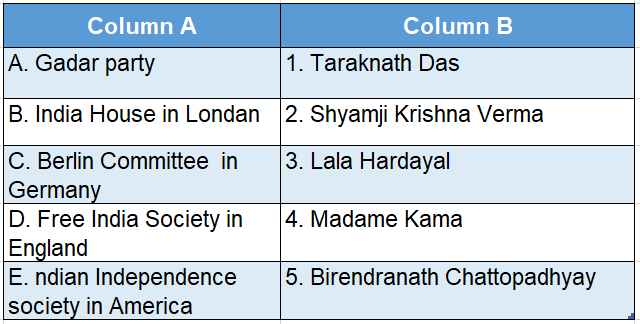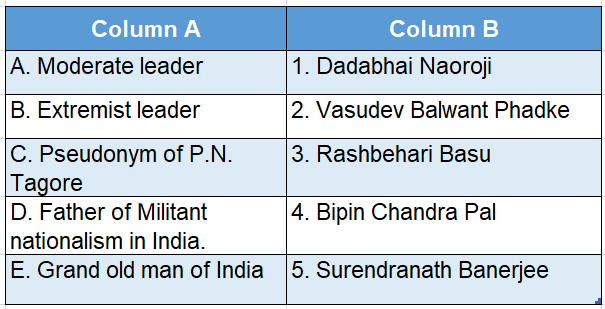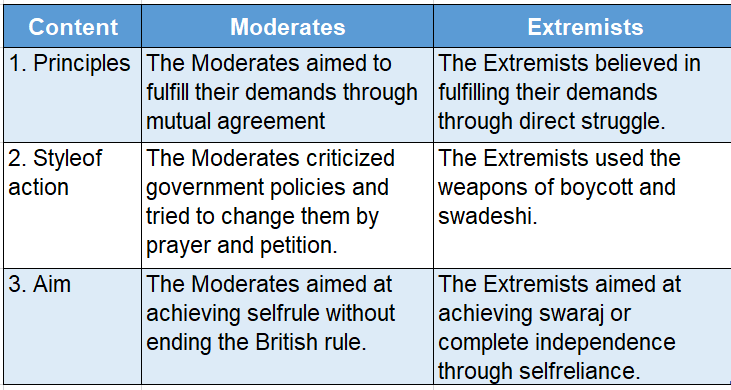Chapter 9 Constitution Of India: Democratic Structure And Citizen’s Rights
Salient Points At A Glance-
1. Constitution of India:
India became independent on August 15, 1947. A Constituent Assembly was formed on December 9, 1946, to draft the Constitution of independent India.
After a discussion of almost three years, the draft was accepted in the Constituent Assembly on November 26, 1949.
It came into force on January 26, 1950. The original draft contained one preamble, 39 articles, and 8 schedules.
After repeated amendments, it now has 407 articles, many sub-articles, and 12 schedules.
2. Republic Day:
January 26, 1950, was declared as the Republic Day of India. It was on this day that the Constitution came into force.
On this day India ceremonially became a sovereign, democratic state. So it is a very important day for the Indians and every year it is celebrated as Republic Day.
Read and Learn More WBBSE Solutions For Class 8 History
3. Protection of Women from Domestic Violence Act:
In society, women often fall prey to deprivation and torture. So the Protection of Women from Domestic Violence Act was passed in 2005 to protect women.
By this law, women can appeal to the judicial magistrate for protection in case of torture or assault.
They can also appeal to the District Protection Officer. In this case, the mentally and financially oppressed women can avail themselves of free legal aid.
Class 8 WBBSE History Question Answer
4. Right to Freedom of Religion:
The present Indian Constitution contains six fundamental rights of which the Right to Freedom of Religion is an important one.
This right is contained in Articles 25 to 28 of the Constitution.
According to Article 26, every religious community can carry its own religious rituals and practices within the fold of its religion, and acquire and use movable and immovable properties.
According to Article 27, no person can be compelled to pay tax for the maintenance, supervision, or spread of any particular religion or religious community.
According to Article 28, no religious lessons or subjects can be taught in governmental educational institutions. However, it is not mandatory for private institutions to follow this.
5. Impeachment:
Impeachment is the process by which the President of India is removed from the post before the completion of a tenure of five years on a charge of violating the Constitution.
The written approval of two third of the total members of Lok Sabha and Raj Sabha is necessary for the impeachment of a President.
6. Directive Principles:
Articles 36 to 51 in Part IV of the Constitution contain some principles instructing the government regarding the administration of the state.
These are called Directive Principles of State policy. Initially, there were 13 such principles but now there are 17. Some of them are
- Right to work
- old age allowance,
- implementation of free compulsory education
- protection of the interest of the backward classes.
The main objective of these principles is to convert India into a public welfare state. Some people say that the main objective is to proceed toward the formation of a socialist state.
7. Local Self-Government System:
The responsibility of administration can be decentralized through the local self-government system. It paves the way for individual development.
In India, there are two types of local self-government rural and municipal. In the villages, Gram Panchayat is the lowest unit of local self-government.
It is supervised by Panchayat Samity which is again supervised by Zilla Parishad. In the cities, the unit for local self-administration is the municipal corporation.
Class 8 WBBSE History Question Answer
7. Mandal Commission:
According to Article 380, the President can appoint a commission for the development of backward classes.
In 1978 a commission was appointed for the development of OBC people named Mandal Commission as its chairman was Shri Vindeshwari Prasad Mandal.
On the recommendation of this Commission, the government declared a reservation of 27% for the people of Other Backward Classes (OBC).
Chapter 9 Constitution Of India: Democratic Structure And Citizen’s Rights Topic A Constitution Of India: Democratic Structure
1. How was the Constituent Assembly formed?
Answer:
Formation Of Constituent Assembly:-
Introduction:
Long before getting independence, the Indians wanted to form a Constituent or Constitutional Assembly and formulate their own constitution.
Though it was not possible in pre-independent India, the Constituent Assembly was formed in independent India following the recommendation of the Cabinet Mission.
Accepting Demands Of The Conferences
1. The Lucknow session of the Congress:
In the Lucknow session of the Congress in 1936 a decision was taken to form the Constituent Assembly.
After three years, in the Ramgarh session in 1939, the Working Committee spoke strongly in favor of forming a Constituent Assembly.
Finally, in 1940 the British accepted the demand of formulating the Constitution through the formation of the Constituent Assembly.
2. As an alternative to the Coopland plan:
When the Cripps Mission failed the government sent Coopland to India. He tried to form a small Constituent Assembly.
In his proposal, there was the provision of a Constituent Assembly on the basis of a unanimous decision rather than a majority.
So the Coopland plan also failed.
Class 8 WBBSE History Question Answer
3. Following proposal of Cabinet Mission:
According to the Cabinet Mission’s plan, the Constituent Assembly was based on four principles. These were
- The British provinces and native provinces would have representation in the Constituent Assembly in proportion to their total population.
- Each province could send one representative per ten lakh population.
- All the seats would be divided proportionately among general classes (non-Sikh and non-Muslims), the Sikhs and the Muslims.
- In the provincial legislatures, the members of each category could choose their representatives through election.
- 43 members could be sent from the native states.
4. Through election:
An election was held in July 1946 to form the Constituent Assembly. The Congress got a clean majority with 69 percent seats, i.e., 208 seats out of 292.
Questions 2. Describe the structure and functions of the Constituent Assembly.
Answer:
Structure And Functions Of The Constituent Assembly:-
Introduction:
The Constituent Assembly was a representative constitution-making body. An attempt was made to make India a democratic state through the formation of the Constituent Assembly.
Indian Constituent Assembly
1. Structure:
According to the Cabinet Mission’s plan, the Constituent Assembly was formed on the basis of four basic principles
- The British provinces and the native provinces could elect representatives in proportion to their total population.
- All the seats would be proportionately divided among the General, Sikh, and Muslim Communities.
- The members of provincial legislatures could send their own representatives.
- The native states could send 93 members. Out of these 50% of members would be elected and 50% would be nominated.
2. Activities:
1. Election of President:
The first session of the Constituent Assembly was organized on December 9, 1946. Dr. Rajendra Prasad was the first President of the Constituent Assembly.
2. Formation of different committees:
The second session of the constituent assembly was held in January 1947 where some powerful committees
were formed these included the executive committee, the committee concerning fundamental rights, and the committee for backward classes.
3. Introduction of the constitutional draft:
In the fifth session of the assembly help in 1947 Lord Mountbatten was appointed as the first Governor General of independent India.
G.V Mavalankar was elected as the first Speaker of the central legislature The Constituent Assembly itself functioned as the first legislature.
Dr. B. R. Ambedkar was elected as the President of the drafting committee. The drafting of the constitution was completed in 11 sessions continuing over 165 days.
After discussing the different amendment provisions the Constitution was accepted in the Constituent Assembly on November 26, 1949.
Class 8 WBBSE History Question Answer
4. Implementation of the new Constitution:
The last session of the Constituent Assembly was held on January 26, 1950. In this session, the Constitution came into force. Dr. Rajendra Prasad was elected as the first President of India.
Questions 3. Discuss the nature of the Constituent Assembly.
Answer:
Nature Of The Constituent Assembly:-
Introduction:
The Indian Constituent Assembly drafted the Constitution of the country.
The provincial legislative councils formed by a 14% majority of Indian citizens elected the members of the Constituent Assembly.
Nature Of Indian Constituent Assembly
1. Lack of public representation:
The members of the Constituent Assembly were not elected directly by the Indians through a universal adult franchise.
So it was a council that lacked popular representation.
2. Domination of lawyers:
The Constituent Assembly was primarily a council of lawyers. In fact, among the twenty-one members who played an important role in drafting the Constitution, eleven were. eminent lawyers.
These lawyers analyzed the articles and sub-articles from the legal point of view while drafting the Constitution of the country.
3. Single Party Council:
The Constituent Assembly could not assume a universal character since it was not represented by the members of all political parties.
As a result of the partition, the Muslim League members went to Pakistan. So the Assembly turned into a single-party organization.
4. Compromising:
The Indian Constitution was the result of a compromise between the British and the Congress.
As a result, the interests of the Indian upper classes were safeguarded. Eg. the allowances of the aristocrats and their awards and titles is an example of such compromise.
Class 8 History WBBSE
5. Non-democratic:
As the native rulers and aristocrats were given 93 sets, i.e., they could elect members in 93 seats, the Constituent Assembly lost its democratic nature.
They were elected indirectly by 14% of the citizens.
Question 4. Discuss the features of the Indian. Constitution.
Answer:
Features Of The Indian Constitution:-
Introduction:
The Indian Constitution came into force on January 26, 1950. Like other countries in the world, the Indian Constitution also has its own features.
It is from these features that the actual nature of the Constitution can be known.
Features Of The Indian Constitution
1. Main Characteristics:
1. Preamble:
The main feature of the Indian Constitution is its Preamble. Through this Preamble, the fathers of the Constitution have described its source, motive, and polities 1 cal structure.
Through the 42nd Amendment of the Constitution in 1976 the words ‘secular’ and ‘socialist’ were added to it.
2. Fundamental Rights:
At present, there are six fundamental rights in the Indian Constitution. These are
- Right to equality,
- Right to freedom,
- Right against exploitation,
- Right to freedom of religion,
- Cultural and educational rights and
- Right to Constitutional remedies.
3. Directive principles of State policy:
Articles 36 to 51 describe the Directive Principles of state policy. These are social, economic, legal, and administrative principles.
4. Fundamental Duties:
Some fundamental duties have been mentioned to keep a harmony between rights and duties.
For example obeying the Constitution and its ideals, showing respect to the National Flag and National Anthem, and protecting India’s sovereignty, unity, and integrity.
Class 8 History WBBSE
5. Secularism:
An important feature of the Indian Constitution is secularism. India has been declared a secular country by the 42nd Amendment Act in 1976.
2. Other features:
- The Indian Constitution is the largest written and complex Constitution in the world.
- The Indian Constitution is both flexible and rigid.
- It contains both federal and unitary features.
- The Indian Constitution provides for single citizenship.
- There is an independent judiciary for impartial justice.
- Articles 300 to 400 in Part XVI contain provisions for reservations for Scheduled Castes, Scheduled Tribes, and other backward classes.
Question 5. Describe the federal administrative structure of India.
Answer:
Federal Administrative Structure Of India:-
Introduction:
A federal system of administration exists in India. This system is made up of central and state executive and judiciary.
Federal Administrative System
1. Central and State legislature:
In India, the parliamentary system of administration is in effect. The Parliament is bicameral and is made up of Rajya Sabha and Lok Sabha.
The central legislature makes laws, amends the Constitution, and determines taxes and their appropriation.
All the provinces also have their own legislature. Some provinces have two houses the upper house is called Bidhan Parishad and the lower house is called Bidhan Sabha.
2. President and Vice President:
The President is the head of administration in India. He is indirectly elected by the people. He possesses supreme power during emergencies.
The Vice President is elected by the members of the two houses. The tenure of the President and Vice President is five years each.
The Vice Principal is the Chairman of the Rajya Sabha. If the President’s post remains vacant the Vice President carries out the functions temporarily.
Class 8 History WBBSE
3. Central Cabinet:
The administration of the country is carried out by a Cabinet of Ministers headed by the Prime Minister.
The leader of the majority party in the Lok Sabha is appointed as the Prime Minister by the President.
The other members of the Cabinet are appointed by the President on the advice of the Prime Minister. The tenure of the Cabinet is generally five years.
4. Supreme Court and High Court:
The Supreme Court is the highest court of justice in India. There is one Chief Justice and 25 other judges. The Supreme Court acts as the protector of the Constitution.
High Court is the highest court in a province. High Court safeguards the fundamental rights of the citizens, solve different disputes, and supervises the work of the lower courts.
5. Governor:
According to the Constitution, the Governor is the head of the state administration. He acts as the representative of the President and the central government.
6. State Ministry and Chief Minister:
The leader of the majority party in a province is generally appointed as the Chief Minister by the Governor.
The State Ministry functions under the leadership of the Chief Minister. Other members of the ministry are appointed by the Governor on the advice of the Chief Minister.
Class 8 History WBBSE
Question 6. Discuss the power and functions of the President of India.
Answer:
Power And Functions Of The President Of India:-
Introduction:
The President of India is the formal head of the executive. All powers relating to the federal administration are concentrated in his hands.
Powers And Functions Of the President
1. Executive Power:
The President has the power to appoint or dismiss the Prime Minister and his council of ministers, Governors, Election Commissioner, and the judges of the High Court and Supreme Court.
He appoints the supreme commanders of the navy, army, and air force and also declares war and peace.
2. Legislative Powers:
The President can call or postpone the sessions of either house of the Parliament and can also dissolve the Lok Sabha in times of emergency.
His signature is required if a Bill has to be turned into a law. He can also nullify a Bill by using his power of veto.
3. Financial powers:
Every financial year the Finance Minister announces and introduces the budget on behalf of the President.
He can form a commission to look into the proper distribution of revenue between the center and the state. His approval is necessary before passing of money Bill.
4. Judicial powers:
The President appoints the judges of the High Courts and Supreme Court. He can also postpone, reduce or condone the punishment of a person accused in a criminal case.
His approval is needed to carry out the execution of a person condemned to death and he can. also, reconsider the death sentence.
5. Emergency powers:
The President can declare an emergency in three situations
1. National emergency:
It is declared in cases of war, external aggression, or internal armed revolt.
2. The collapse of administrative machinery:
It is declared if the administration in any province is not being conducted according to the constitution.
3. Financial emergency:
It is declared if there is a financial crisis in any part of the country.
6. Other powers:
If the President’s prior approval is needed in any Bill of any province then he can issue ordinances to the Governor.
He can form a finance commission and an official language commission.
He can announce any area of the country as a scheduled or non-scheduled area and can also change the frontier of a scheduled area.
Class 8 History WBBSE
Question 7. Give an account of the power and functions of the Supreme Court.
Answer:
Introduction:
Supreme Court is the highest court of justice in India. As the apex court, it enjoys some more powers.
Powers And Functions Of the Supreme Court
1. Actual Jurisdiction:
Article 131 of the Indian Constitution contains a description of the powers and functions of the Supreme Court.
If there is any legal conflict between the center and the state or one or more states or if there is any confusion regarding.
The interpretation of the Constitution, then these are resolved under the actual jurisdiction of the Supreme Court.
2. Appellate Jurisdiction:
If any constitutional confusion occurs in case of any proceedings going on in a High Court whose verdict has just been given, then those are solved in the appellate jurisdiction.
Civil and criminal cases are also solved in the appellate jurisdiction of the Supreme Court.
3. Advisory Jurisdiction:
The Supreme Court advises the President if any confusion arises regarding any law or information concerned with the public welfare.
4. Decrees, instructions, and writ issue jurisdiction:
The Supreme Court might issue some decrees, instructions, and writs to strengthen and implement the fundamental rights of the citizen.
Thus the Supreme Court acts as a guardian of fundamental rights.
5. Other Powers:
Some of the other significant powers of the Supreme Court are the reconsideration of its own verdicts and orders, punishment for contempt of court, and issuing decrees to establish true justice.
Question 8. Describe the different fundamental rights as mentioned in the Constitution.
Answer:
The Different Fundamental Rights Are Mentioned In The Constitution:-
Introduction:
The citizens of our country have been granted some fundamental rights by the Indian Constitution. These are included in Article 12 to Article 35.
Fundamental Rights
1. Right to Equality:
Right to Equality means the end of discrimination in economic, social, and political spheres and the establishment of equal rights for all.
However backward classes, scheduled castes and tribes, and children can be given special privileges.
2. Right to freedom:
In the original Constitution, there were seven rights to freedom but the Right to property has been omitted from the list by the 44th Amendment of the Constitution.
Class 8 History Solution WBBSE
Now, there are six freedoms
- freedom of speech and expression,
- freedom of peaceful gathering,
- freedom of building associations and organizations,
- freedom of movement anywhere in the country,
- freedom of practicing any profession or trade,
- freedom of residing in any part of the country.
3. Right against exploitation:
Through this right, an attempt has been made to protect the citizens from the oppression of any person or association.
- This right prohibits human trafficking, slavery, and bonded labor.
- According to article 24, no children. below 14 years can be employed in mines, factories, and other risky jobs.
4. Right to freedom of religion:
The ideal of secularism has been established through this right. Through this, the following rights are upheld
- every individual can conscientiously practice and preach any religion,
- no religious subjects can be taught in government educational institutions,
- no person can be compelled to pay taxes for the expansion and protection of any particular religion or sect.
5. Cultural and educational rights:
Through this right Every citizen can use his own language, culture, and script, nobody can be denied admission to any educational institution on the ground of religion, caste, or language.
Through this right, minorities got the right to establish and maintain their own educational institutions.
6. Right to Constitutional Remedies:
Indian citizens can appeal to the Supreme Court for enforcing their fundamental rights in case of any hindrance. The Supreme.
The court can issue writs to enforce the rights. In the same way, the High Courts can also issue orders to preserve fundamental rights (Article 226).
Question 9. Differentiate between the ‘Fundamental Rights’ and Directive Principles of State Policy in the Indian Constitution.
Answer:
The Differentiate Between The ‘Fundamental Rights’ And Directive Principles Of State Policy In The Indian Constitution:-
Introduction:
The third and fourth parts of the Constitution contain the Fundamental Rights and Directive Principles respectively.
Apparently, both appear to be the same but there are some differences between them.
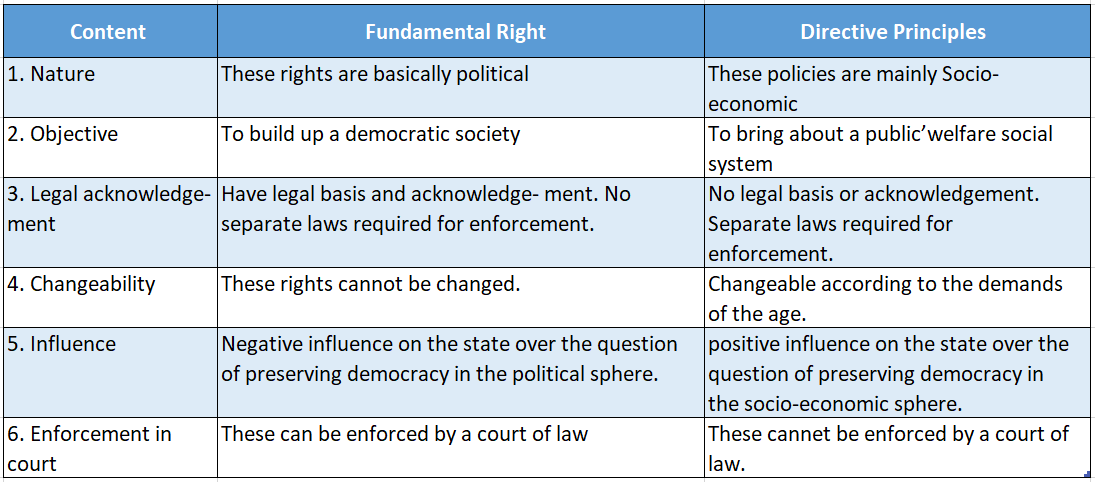
Question 10 Discuss the fundamental duties as laid down by the Indian Constitution.
Answer:
Fundamental Duties Was Laid Down By The Indian Constitution:-
Introduction:
The original Indian Constitution did not contain the Fundamental Duties of the citizens. Afterward, these were incorporated into it the 42nd Amendment in 1976.
Class 8 History Solution WBBSE
Fundamental Duties Of The Indian Constitution
The 11 Fundamental Duties mentioned in the present Constitution are
- To obey the Constitution and respect its ideals, constitutional institutions, National Flag and National Anthem.
- Preservation and initiation of the noble ideals that had inspired the freedom struggle.
- To support and preserve the sovereignty, unity, and integrity of India.
- Come forward for the protection of the country and for national service.
- To rise above religion, language, region, and class and spread unity and fraternity among all Indians, and avoid everything which would harm the prestige of women.
- To value and preserve the glorious tradition of the composite Indian culture.
- To preserve and develop the forests, lakes, rivers, and wildlife and show kindness to animals
- To develop a scientific attitude, humanity, inquisitive venèss, and reformative attitude.
- To protect national property and abandon the path of violence.
- To endeavor to develop all sorts of personal and joint enterprises
- To provide education to all children between the age of 6 and 14 years by their parents and guardians.
Comment:
The Fundamental Duties mentioned in the Indian Constitution are not enforceable in a court of law. This means that the state cannot compel the people to obey these duties.
Chapter 9 Constitution Of India: Democratic Structure And Citizen’s Rights Topic A Constitution Of India: Democratic Structure Short Analytical Type Questions
Question 1. What are the main objectives of the Indian Constitution?
Answer:
Objectives Of The Indian Constitution:-
1. Main objectives of the Constitution:
The main objectives of the Constitution are as follows
1. Socio-economic development:
The foremost objective of the Constitution was to bring about the socio-economic development of independent India. Jawaharlal Nehru said,
“The newly framed Constitution would safeguard the independent Indians, provide food to the hungry, clothes to the unclad, and will arrange for everybody’s self-development.
” Dr. Sarbapalli Radhakrishnan said, “The main aim of the Constitution will be the socio-economic revolution in India”.
2. Building up a sovereign, democratic state:
The fathers of the Indian Constitution had described the political aim of the Constitution saying that “India will evolve as an independent sovereign secular democratic republic.
In that India, there will be independence of the judiciary, impartiality, and the existence of parliamentary democracy.
3. Social aim:
Class 8 History Solution WBBSE
Besides the establishment of justice, the Constitution also assigns importance to
- special reservation for the Scheduled Caste, Scheduled Tribes, and other backward classes,
- women and child welfare and
- elimination of untouchability.
Question 2. Why is Ambedkar famous in history?
Answer:
Ambedkar Famous In History:-
1. Leader of the Hindu backward class:
Ambedkar had taken the initiative of obtaining some privileges for the backward and undeveloped Hindu class and represented them himself.
At the Round Table Conference in 1930-32, he demanded separate seats for the backward classes in the legislature. Later on, this demand was accepted in the Constitution.
2. As a maker of the Constitution:
1. In protecting fundamental rights:
Ambedkar played an important role as the president of the Drafting Committee of the Constitution.
As a result of his efforts the undeveloped sections of society were given some special fundamental rights and powers in the Constitution.
2. special priority in jobs:
The Scheduled Castes and Tribes were given some special privileges in the Indian Constitution due to the initiative of Ambedkar.
This includes giving priority to the undeveloped classes for jobs.
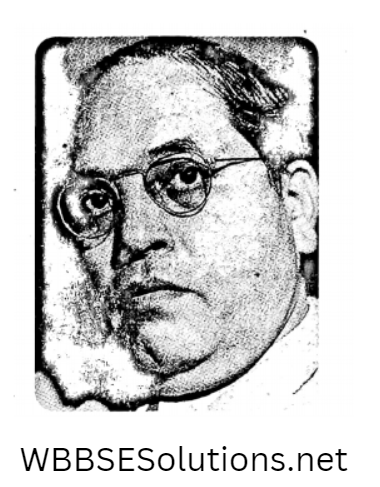
Question 3. Explain the gist of the Preamble of the Indian Constitution.
Answer:
Gist of the Preamble:
The Preamble says that all the Indians truthfully took a vow to make India a sovereign socialist secular democratic republic.
They would ensure that every citizen got social, economic, and political justice, liberty of expressing thought, opinion, faith, religion, and worship, and equality of prestige and privileges.
They would give priority to self-respect and unity and integrity of the nation and spread the ideals of fraternity.
So that day on November 26, 1949, they accept the Constitution framed by the Constituent Assembly, enacted it, and give it to themselves.
Question 4. Explain the Preamble of the Constitution.
Answer:
Preamble Of The Constitution:-
Explanation of the Preamble:
Sovereign: ‘Sovereign’ means India is completely free from foreign control, both internally and externally, and possesses supreme power.
Socialist: Although the Preamble describes India as a socialist state socialism has not been established in the real sense of the term. Here mixed economy is discernible.
Secular: As a secular country India neither supports nor opposes any religion.
All religions get equal recognition here. Democratic means the Indian administration is based on public opinion.
Republic: Republic means that the post of the head of the state is not hereditary and is elected by the public directly or indirectly.
Class 8 History Solution WBBSE
Question 5. What is the significance of calling India a democratic republic?
Answer:
Significance Of Calling India A Democratic Republic:-
1 Democracy: India is a democratic country.
- In Indian society, everybody is entitled to equal prestige, rights, and privileges. Here no discrimination is made on the basis of birth or wealth.
- Every person can participate in the administration after winning the election.
- In India, every adult citizen has the right to vote.
Republic: India is a republic. According to the features of the republic
- The head of the state does not get his power hereditarily. He has to be elected by the people directly or indirectly.
- There is no place for a king or kingship here.
Question 6. State the significance of the National Flag.
Answer:
Significance Of The National Flag:-
1. Symbol of the country and nation:
The national flag of India is the symbol of India as well as of the self-respect, prestige and freedom of the Indians.
2. Meaning of colors:
The three colors of our national flag have different meanings. The flag has saffron color at the top which symbolizes sacrifice and courage.
In the middle lies white color which indicates peace and truth. The bottom portion is. green is a color of faith and valor as well as prosperity.
There is a blue wheel at the center which resembles Ashokan Wheel. It symbolizes justice, religion, and progress. The ratio of the length and breadth of the flag is 3:2.
Question 7. State the significance of January 26, 1950.
Answer:
Significance Of January 26, 1950:-
1. Historical viewpoint:
The Congress accepted a historic proposal at its Lahore session under the leadership of Jawaharlal Nehru.
It was proposed that January 26, 1930, would be celebrated as Independence Day all over the country.
This created an air of mirth among the people. On midnight of 31st December, thousands of people hoisted the tri-color national flag on the bank of river Ravi.
So every year this day is celebrated in India as our Independence Day.
Class 8 History Solution WBBSE
2. As the Republic Day:
Although January 26 was celebrated as Independence Day during the freedom struggle, India actually became independent on August 15, 1947.
However, the national leaders decided to observe this day as Republic Day to keep its memory alive. So January 26 is celebrated as Republic Day since 1950.
Question 8. Why is the President called a formal head?
Answer:
President Called A Formal Head:-
According to the Parliamentary system of administration, the President is the formal or nominal head of the nation.
1. Titular Head:
Though the President is the head of the state he is not the administrative head. He neither represents the nation nor governs it,
2. Receiver of Cabinet’s counsel:
According to the provisions of the Constitution, the President is bound to abide by the decisions of the Cabinet in almost all cases.
3. Lack of autocratic power:
Unlike the Governor, the President does not have any autocratic power. So he is a formal or nominal head.
Question 9. Mention the tenure of the President.
Answer:
1. Tenure of President:
Theoretically, the President of India is an executive head but he is also regarded as an inalienable part of the legislature.
He is indirectly elected by the people and his tenure is for five years. However, he may resign before the completion of five years.
He can also be removed by the Parliament through impeachment. If the President’s post remains vacant then the Vice.
President performs his functions for some time, but a new President has to be elected within six months.
Question 10. What is the structure of the Supreme Court?
Answer:
Structure Of The Supreme Court:-
The Supreme Court occupies the highest post in the Indian judiciary. Article 124(1) says that until the Parliament passes an Act fixing the number of judges in the Supreme Court,
there will be one Chief Justice and a maximum of seven judges. However, the Parliament may increase the number of judges by enacting a law.
The judges are appointed by the President. According to the law passed in 1986 the Supreme Court consists of one Chief Justice and 25 assistant judges.
Question 11. Write a note on Directive Principles.
Answer:
Directive Principles:-
1. Source:
The French ‘Declaration of Human and Citizens’ Rights’ and ‘The Declaration of American Independence’ are said to be the sources of the Directive Principles.
These principles are enlisted in Articles 36 to 51 of the Indian Constitution.
2. Divisions:
Directives are divided into Directives regarding the establishment of social rights and removal of economic discrimination,
Directives regarding the development of administrative structure, Directives concerning the building of a progressive state, and Directives regarding the development of international relations.
3. Features:
These Directive Principles cannot be enforced in a court of law. 2 India is a welfare state.
It is necessary to add these principles to implement public welfare ideals and schemes properly.
4. Addition:
Initially, there were 13 principles. After the 42nd Amendment in 1976, 4 more principles were added.
Question 12. Does the Constitution mention the establishment of social justice?
Answer:
Establishment Of Social Justice:-
The In the Indian Constitution any discrimination regarding caste, religion, or gender has been overruled
- Reservation is done with regard to education, employment, and election for the security, development, and prestige of the neglected, backward, and oppressed Scheduled Cast and Scheduled Tribes.
- The Zamindari system has been abolished and surplus land has been distributed among the landless.
- Untouchability has been legally banned.
- More measures have been taken to foster secularism.
- No titles or appendages can be used in front of names except educational degrees.
Chapter 9 Constitution Of India: Democratic Structure And Citizen’s Rights Topic A Constitution Of India: Democratic Structure State Whether The Following Statements Are True Or False.
Question 1. Dr. Rajendra Prasad was the first President of the Constituent Assembly.
Answer: True
Question 2. Dr. B. R Ambedkar was the President of the drafting committee of the Constitution.
Answer: True
Question 3. Dr. Rajendra Prasad was the second President of the Indian Republic.
Answer: False.
Question 4. Jawaharlal Nehru was the first Prime Minister of independent India.
Answer: True
Question 5. Rajya Sabha is the lower house of the Parliament.
Answer: False.
Question 6. The President is the formal head of India.
Answer: True
Question 7. Lok Sabha is the upper house of the Parliament.
Answer: False.
Question 8. The upper house of the Parliament is presided over by Vice President.
Answer: True
Question 9. The lower house of the Parliament is presided over by the Speaker.
Answer: True
Question 10. The Supreme Court is the highest court in India.
Answer: True
Question 11. The lower house of a state is called Bidhan Sabha.
Answer: True
Question 12. The upper house of a state is called Bidhan Parishad.
Answer: True
Question 13. The highest court in a state is the High Court.
Answer: True
Question 14. The Chief Election Commissioner is appointed by the Prime Minister.
Answer: False.
Question 15. The Indian citizens get the right to vote at the age of 18.
Answer: True
Question 16. The tenure of Lok Sabha members is five years.
Answer: True
Question 17. The national anthem of India is ‘Jana Gana Mana’.
Answer: True
Chapter 9 Constitution Of India: Democratic Structure And Citizen’s Rights Topic A Constitution Of India: Democratic Structure Fill In The Blanks By Selecting The Appropriate Expressions From The Brackets
Question 1. _________ (Dr. B. R. Ambedkar/Babu Rajendra Prasad/Jawaharlal Nehru) was the permanent President of the Constituent Assembly.
Answer: Babu Rajendra Prasad
Question 2. The Indian Constitution came into force on _________ (August 15, 1947/ August 15, 1931/January 26, 1950).
Answer: January 26, 1950
Question 3. The number of states in the Indian Federation is _________ (26/27/28).
Answer: 28
Question 4. _________ (China/India/Russia) is the largest democracy in the world.
Answer: India
Question 5. The _________ (President/Vice President/Prime Minister) presides over the Rajya Sabha.
Answer: Vice President
Question 6. _________ (Nehru/Patel/Rajendra Prasad) was the Prime Minister of the interim government.
Answer: Nehru
Question 7. At present the Indian Constitution contains _________ (448/407/414) articles.
Answer: 448
Question 8. The first speaker of the Parliament in independent India was _________ (Rajendra Prasad/Sukumar Sen/G. V. Mavalankar).
Answer: G. V. Mavalankar
Question 9. The election of the Constituent Assembly was held in July _________ (1944/1946/1948).
Answer: 1946
Question 10. The drafting committee of the Indian Constitution submitted their draft before _________ (Bidhan Sabha/Lok Sabha/Constituent Assembly).
Answer: Constituent Assembly
Question 11. The first session of the Constituent Assembly was held in _________ (1946/1948/1950).
Answer: 1946
Question 12. The _________ (President/Vice President/Speaker) presides over the Lok Sabha.
Answer: Speaker
Question 13. The Chief Justice of the Supreme Court is appointed by the _________ President/VicePresident/Prime minister).
Answer: President
Question 14. The Governor is appointed by the _________ (Prime Minister/President/Speaker).
Answer: President
Question 15. _________ (Dr. Sarbapalli Radhakrishnan/Dr. Rajendra Prasad/V. V. Giri) was the first Vice President of India.
Answer: Dr. Sarbapalli Radhakrishnan
Question 16. The Right to freedom of religion of the citizens was added to the Constitution by the _________ (42nd/44th/46th) amendment.
Answer: 44th
Question 17. The federal principles have been adopted in the Indian Constitution from _________ (USA/England/Soviet Russia).
Answer: USA
Question 18. The Cabinet system of government has. been adopted in the Indian Constitution from the Constitution of(Ireland/England/Soviet Russia).
Answer: England
Question 19. The Directive Principles of State Policy have been adopted in the Indian Constitution from the Constitution of _________ (Ireland/China/Soviet Rusia).
Answer: Ireland
Question 20. The main page of the Preamble of the Indian Constitution was decorated by _________ (Ramkinkar Vez/Nandalal Basu/Abanindranath Tagore).
Answer: Nandalal Basu
Question 21. The head of the state of India is _________ (President/Prime Minister/Chief Justice of Supreme Court).
Answer: President
Question 22. The _________ (Prime Minister/Vice President/Speaker) enjoys the second position after the President.
Answer: Vice President
Question 23. _________ (Bidhan Sabha/Parliament/Supreme Court) consists of the President and two houses.
Answer: Parliament
Question 24. In the parliamentary system of India, the _________ (President/Vice President/Prime Minister) enjoys the highest post.
Answer: Prime Minister
Question 25. _________ (President/Prime Minister/Speaker) is the functional head of the Government of India.
Answer: Prime Minister
Question 26. Each Indian state has _________ (one/two/three) legislatures.
Answer: one
Question 27. In the state, the _________ (Chief Minister/Governor/Finance Minister) is the highest authority.
Answer: Governor
Question 28 _________ (Speaker of Bidhan Sabha/ governor/Chief Minister) is the head of the State Government.
Answer: Chief Minister
Question 29. _________ (Prafulla Ghosh/Jyoti Basu/Mamata Banerjee) was the first Chief Minister of W.B.
Answer: Prafulla Ghosh
Chapter 9 Constitution Of India: Democratic Structure And Citizen’s Rights Topic A Constitution Of India: Democratic Structure Answer In A Complete Sentence
Question 1. What does the term ‘secular’ in Indian Constitution mean?
Answer: The term ‘secular’ in Indian Constitution is intended to emphasize that India has no state religion and the state will neither encourage nor oppose any particular religion.
Question 2. What does the word ‘socialist’ in Indian Constitution mean?
Answer: The word ‘socialist’ in the Indian Constitution conveys the vision of developing a social system based on a mixed economy, that is, an economy based on state as well as private ownership
Question 3. Who are the source and custodians of the Constitution of India?
Answer: Constitution of India is the source and audio of the constitution of India.
Question 4. Who holds the most important post in the parliamentary democratic system of India?
Answer: The Prime Minister holds the most important post in the parliamentary democratic system of India.
Question 5. What should be the minimum age to become a member of the Lok Sabha?
Answer: To become a member of Lok Sabha one should be at least 25 years old.
Chapter 9 Constitution Of India: Democratic Structure And Citizen’s Rights Topic A Constitution Of India: Democratic Structure Select The Most Appropriate Explanation For The Following Statement
Question 1. A constitution is needed to conduct the affairs of a state
- The State abides by the constitution.
- The dictates of the Constitution are final.
- All the policies of the state are made according to the constitution.
Answer: 1. The State abides by the constitution.
Question 2. Every year Republic Day is celebrated on January 26.
- On this day the Indians. liberated themselves from British rule.
- India was declared a republic on January 26, 1950.
- The Indian citizens got their different rights on January 26, 1950.
Answer: 2. India was declared a republic on January 26, 1950.
Question 3. The Preamble of the Indian Constitution is called the conscience or spirit of the Constitution.
- The Preamble contains the rights and duties of the citizens.
- The Preamble contains the description of the sovereign power of the Constitution.
- The ideals and objectives of the Constitution are contained in the Preamble.
Answer: 3. The ideals and objectives of the Constitution are contained in the Preamble.
Question 4. India is not bound to obey the orders, instructions, or requests of any foreign country.
- India is a democratic republic.
- India possesses sovereign power.
- India is bound by its Constitution.
Answer: 2. India possesses sovereign power.
Question 5. The democratic administration is successful in the local self governmental
institutions.
- The people get an opportunity to participate directly.
- President’s rule prevails in self-governmental institutions.
- The local self-government system is conducted by the state government.
Answer: 1. The people get an opportunity to participate directly.
Question 6. The downtrodden society (Dalits) launched a movement to establish their rights and prestige.
- The government did not try to protect the interest of the poor.
- Many Congress leaders did not want to give much importance to racial discrimination issues.
- The prestige and rights of the Dalits were reduced due to the transfer of power.
Answer: 2. Many Congress leaders did not want to give much importance to racial discrimination issues.
Question 7. There was not much improvement in the condition of the Harijans.
- The Harijans did not get religious rights.
- The Harijans got only. economic rights and not political rights.
- The Harijans were deprived of economic and religious rights.
Answer: 3. The Harijans were deprived of economic and religious rights.
Question 8. The Constitution’s use of the word and concept of ‘minority’ does not bear a communal sense.
- The word minority has been. used as a contrast to the majority.
- Minority refers to the backward classes in society.
- The minority is determined by the number of persons in society.
Answer: 3. Minority is determined by the number of persons in society.
Question 9. The Alchiki script of the Santhals was given much respect in the Indian Constitution.
- The Indian constitution upholds the linguistic right of minorities.
- The constitution has recognized all Indian languages.
- Most of the people among the minorities use this script.
Answer: 1. The Indian constitution upholds the linguistic right of minorities.
Question 10. The Indian Constitution is determined to provide all citizens with the security of food, clothing, and housing.
- The main task of the Constitution is to provide overall security to the citizens.
- The objective of the Constitution is to provide social prestige to all citizens in an independent state.
- An important directive principle is to provide security to the Indians.
Answer: 2. The objective of the Constitution is to provide social prestige to all citizens in an independent state.
Chapter 9 Constitution Of India: Democratic Structure And Citizen’s Rights Topic A Constitution Of India: Democratic Structure Multiple Choice Questions
Question 1. The constitution was adopted in Constituent Assembly on
- 26th November 1946
- 26th November 1947
- 26th November 1949
- 26th November 1950
Answer: 3. 26th November 1949
Question 2. The British Government took up the proposal to form a Constituent Assembly in
- 1944
- 1946
- 1947
- 1948
Answer: 2. 1946
Question 3. The number of members in the Drafting
- 7
- 8
- 9
- 10
Answer: 1. 7
Question 4. Legally and theoretically, the head of the Committee was government is
- Chief Minister
- Vice President
- Governor
- President
Answer: 4. President
Question 5. The dignity of the post of Vice President is next only to
- Prime Minister
- Speaker
- President
- Home Minister
Answer: 3. President
Question 6. The ‘soul’ or the ‘conscience’ of the Constitution is
- Fundamental Rights
- Directive Principles
- Preamble
- Fundamental Duties
Answer: 3. Directive Principles
Question 7. The constitutional head of the state government is
- Chief Minister
- Finance Minister
- Finance Secretary
- Governor
Answer: 4. Governor
Question 8. The Vice president is the ex officio chairman of
- Lok Sabha
- Rajya Sabha
- Vidhan Sabha
- Vidhan Parishad
Answer: 2. Rajya Sabha

